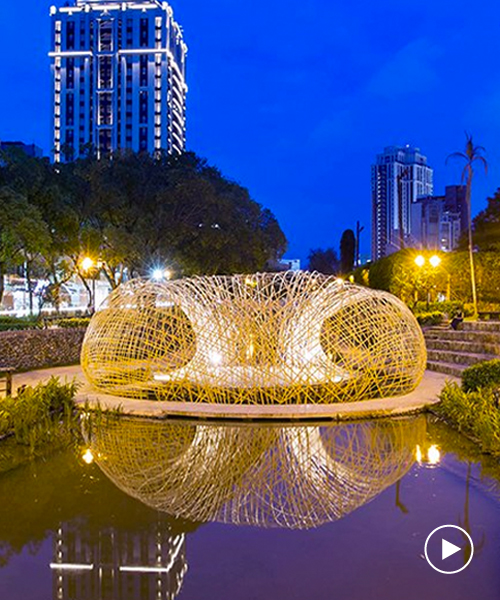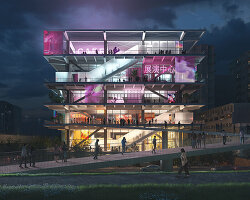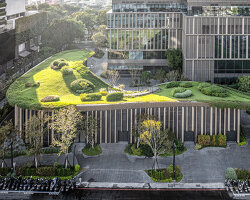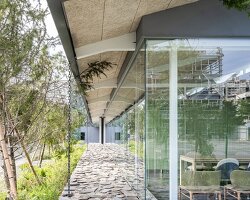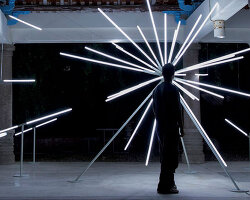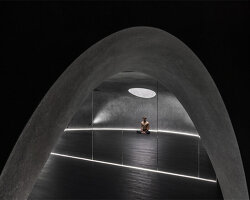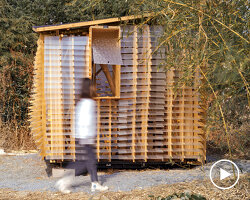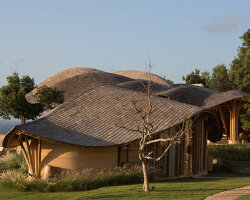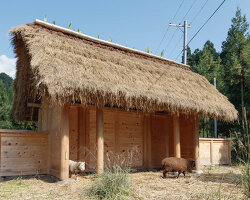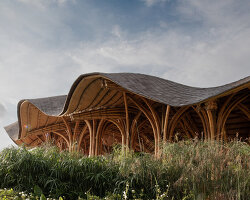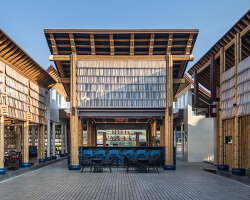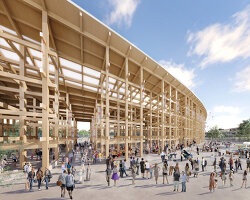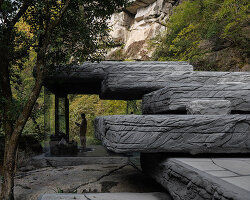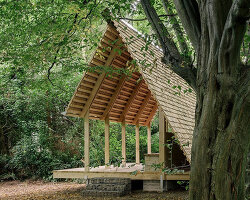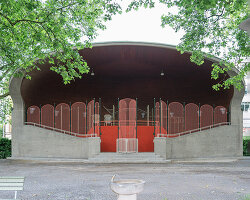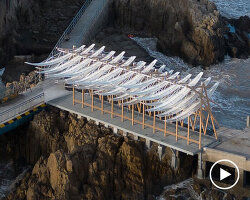developed by a research team at the school of architecture of the chinese university of hong kong (CUHK), TOROO is a public art installation in hsinchu, taiwan, that pushes the boundaries of bamboo as a structural material. led by prof. kristof crolla and with project architect mr. garvin goepel, the work was on display between 29 june– 22 july 2019 as part of the ‘fun old town’ event, where local volunteers assisted in its construction.
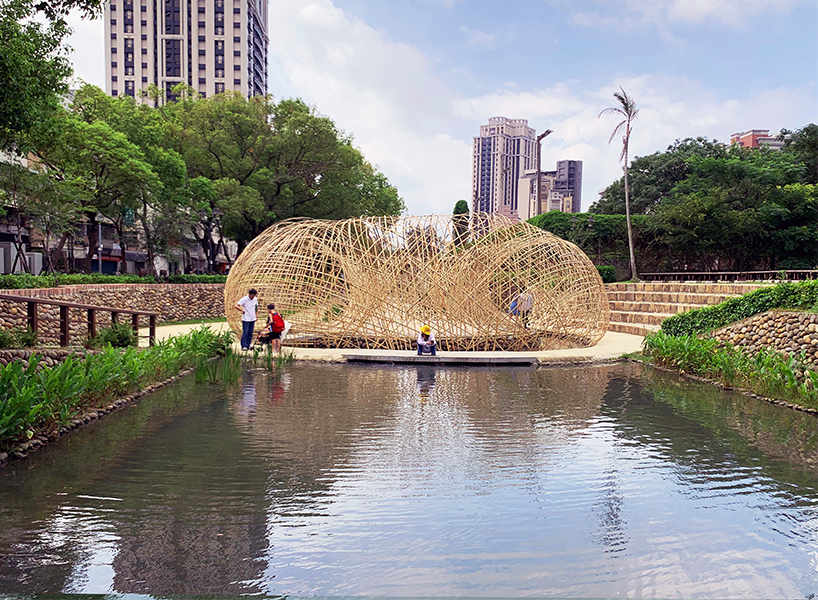
images courtesy of the chinese university of hong kong school of architecture (CUHK)
positioned on a small public stage in pei ta park, TOROO experiments with the combination of sustainable construction and local craftsmanship to produce a highly engaging architectural intervention that activates the existing space. using bamboo splits, the team at CUHK has built a hyper-lightweight, bending-active gridshell structure defined by a fluid and organic form.
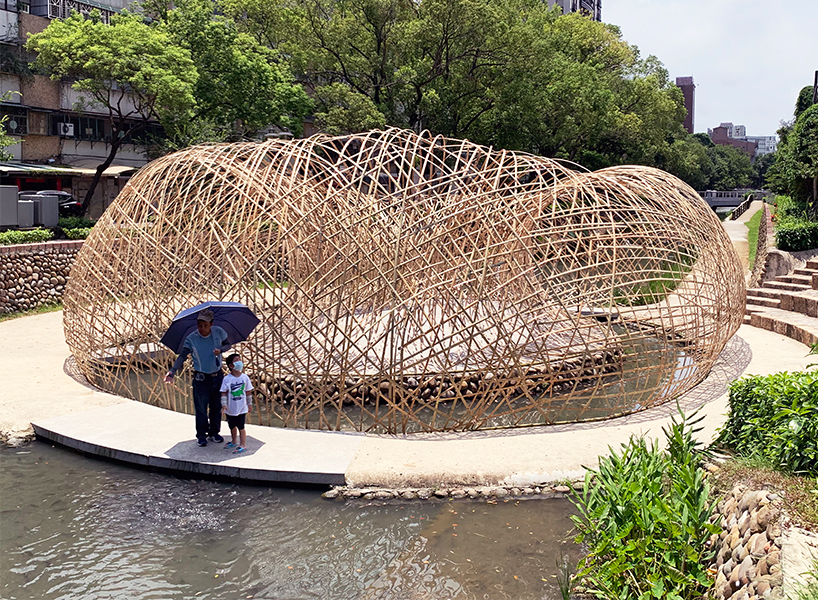
with its rounded, cocoon-like form, the temporary pavilion invites visitors to interact with the installation. as they meander through the shell, the structure hides and reveals itself, resulting in an ephemeral place typified by varying levels of enclosure. appearing almost to float on the water, the architecture effectively evokes the idea of a structure found in nature.
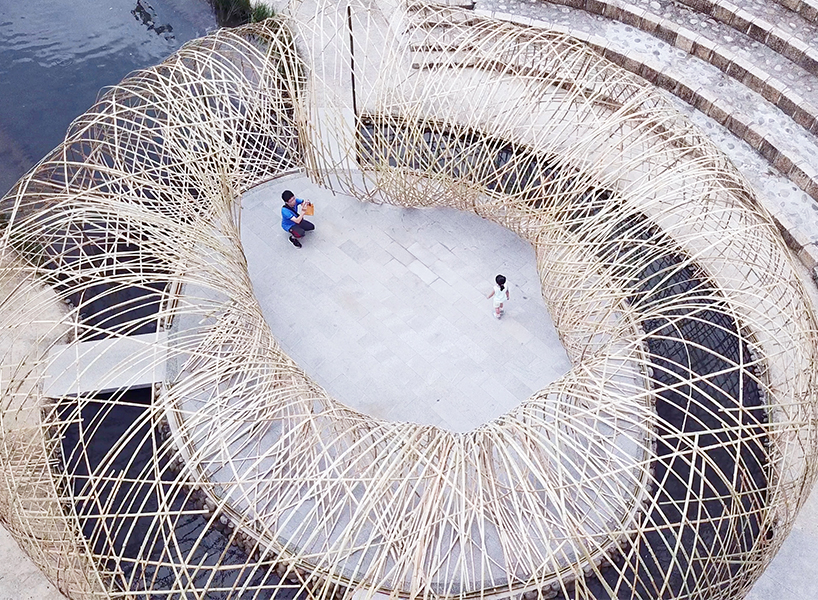
bamboo was selected as the construction material as it is fast-growing and carbon-sequestering, making it far more sustainable than other wood species. TOROO advocates for the integration of bamboo as a viable structural material in todays construction industry and highlights its most exceptional asset – bendability – as a unique architectural design opportunity.
bamboo has been a vernacular construction material for centuries and is widely available in most rapidly developing parts of the world. TOROO intends to demonstrate how this type of material and craftsmanship can be practically combined with digital design technology to enable radically unique and spatially versatile architectural solutions rooted in local culture and sustainable development.
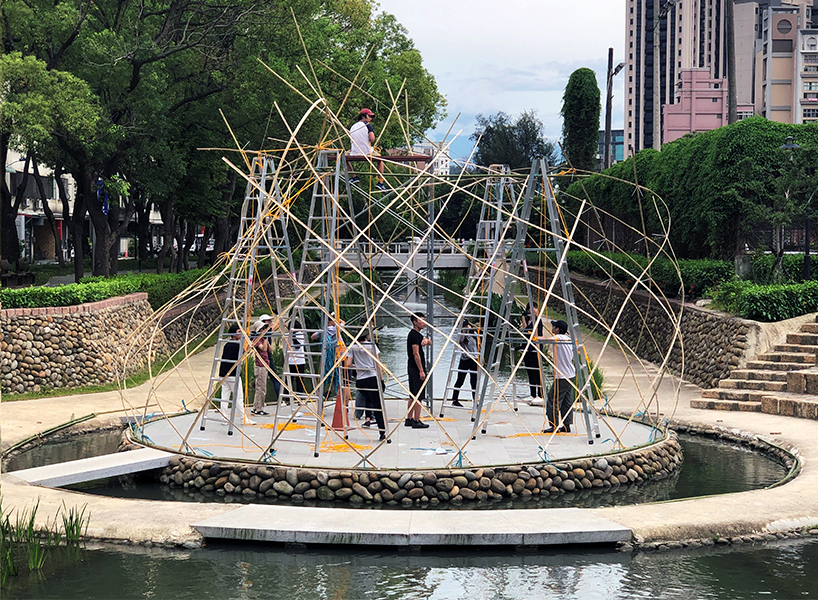
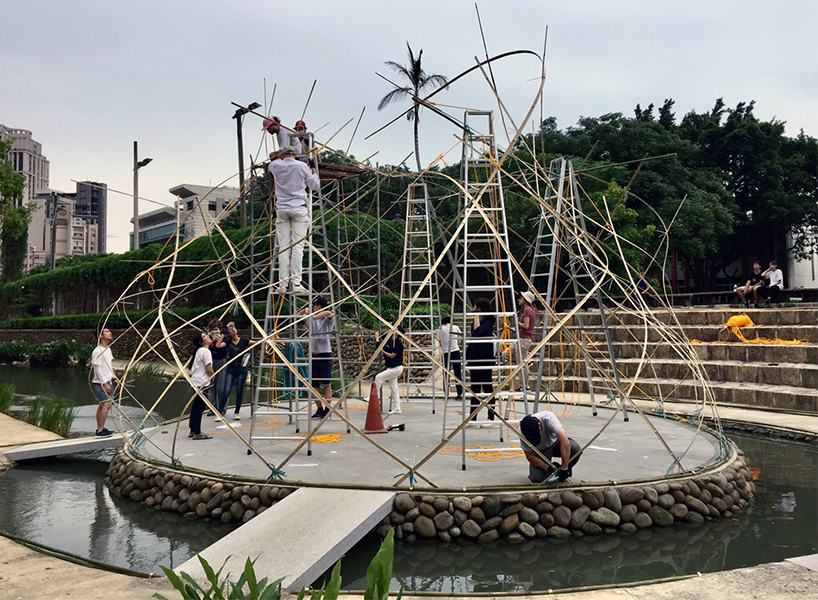
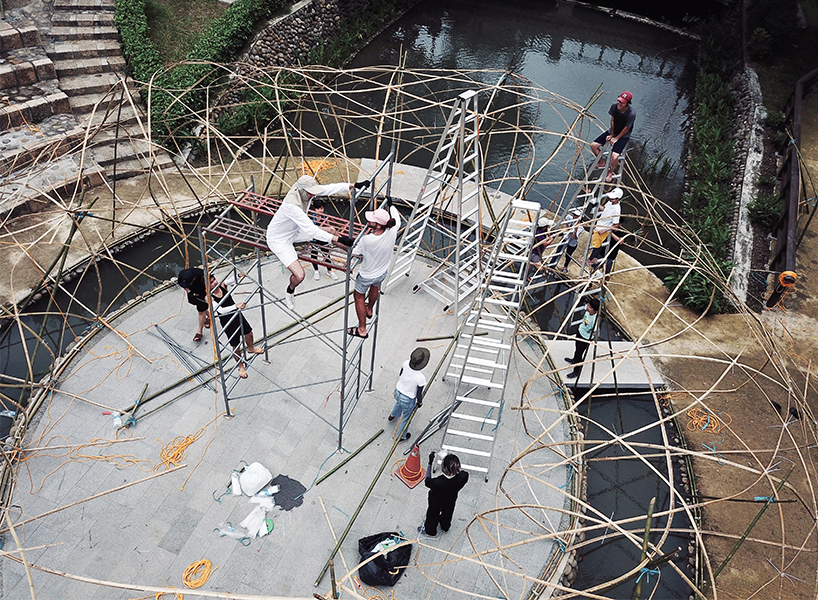
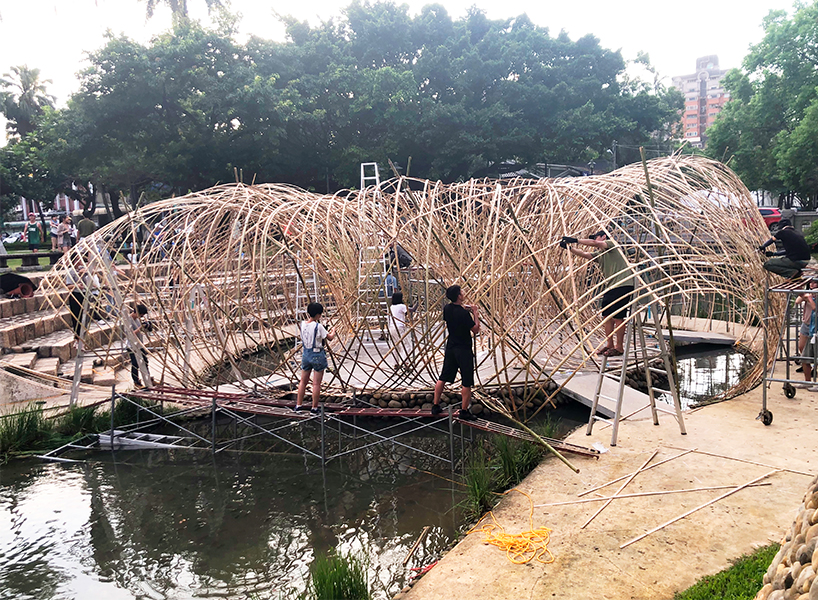
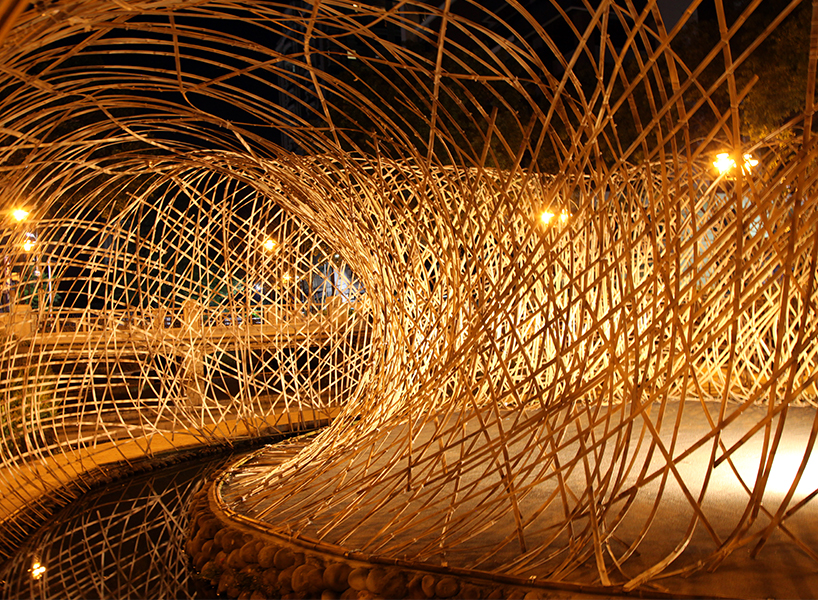
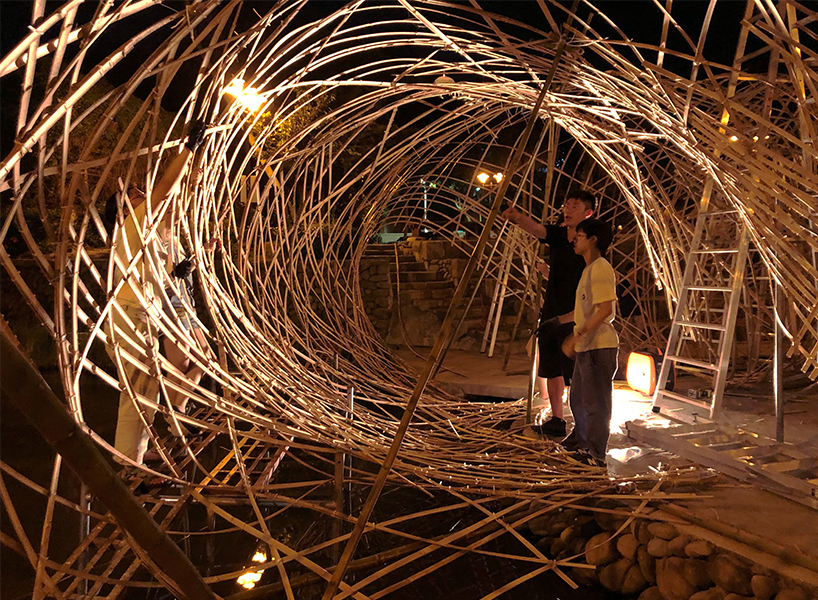
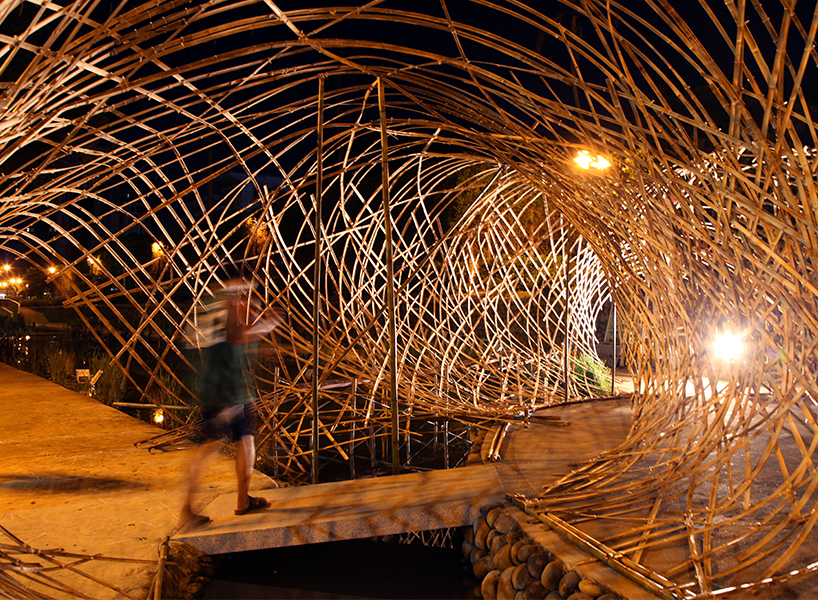
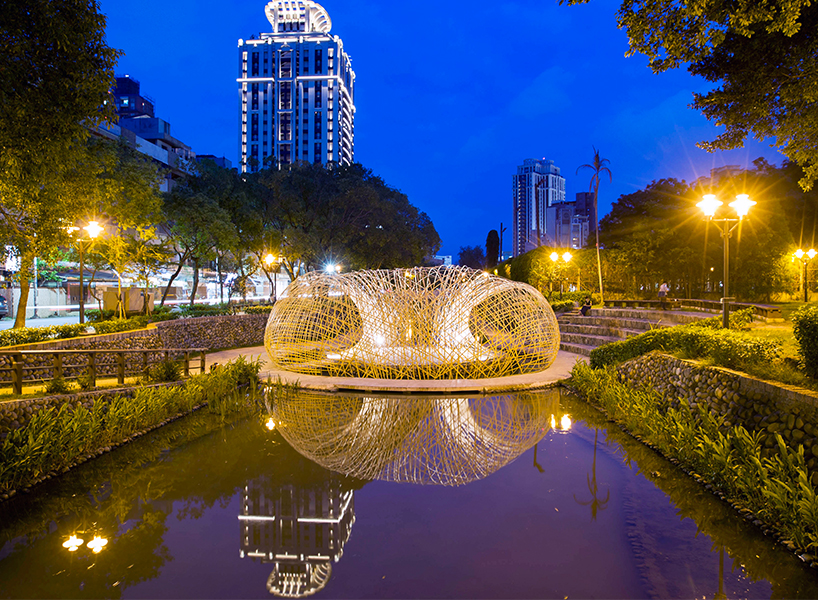
project info:
project name: TOROO
location: hsinchu, taiwan
date: 29 june – 22 july 2019
design: the chinese university of hong kong school of architecture (CUHK)
in collaboration with: national chiao tung university graduate institute of architecture (NCTU), association of humanitarian architecture (AHA), hsinchu city government
CUHK design & research team:
principal investigator: prof. kristof crolla
project leader: garvin goepel
video designer: julien klisz
workshop and construction team: prof. kristof crolla, garvin goepel, nichol long-hin wong, shuk-man lo, jae sok surh, tong chen, victor wei-chung chien, hui-ting hsu, yen lun huang, nicky chung-yu hwang, yu chuan lai, tsung-i lee, mu-huai liu, hang yu peng, carol yu-jung shen, wa bowe, xin-yu wang
special thanks to: hsinchu city mayor lin chih-chien and prof. pei-hsien hsu, prof. david tseng and prof. june-hao hou of nctu
this CUHK project research was partially supported by a grant from the research grants council of the hong kong special administrative region china.
designboom has received this project from our ‘DIY submissions‘ feature, where we welcome our readers to submit their own work for publication. see more project submissions from our readers here.
edited by: lynne myers | designboom
